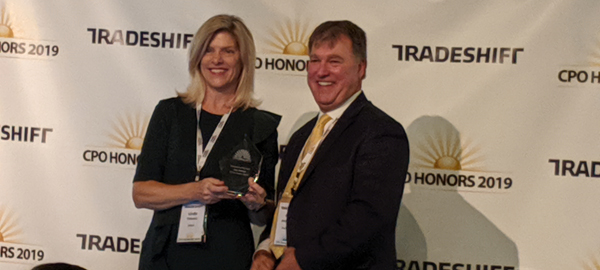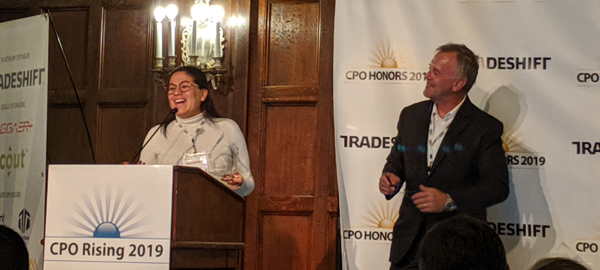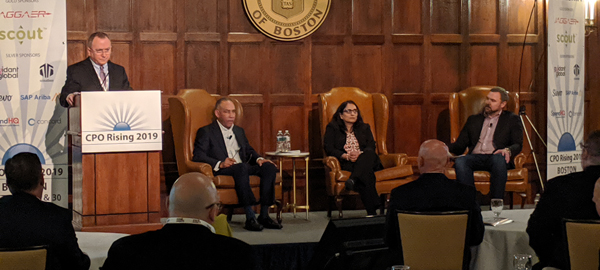CPO Rising 2019 Speaker Profile – Dan Warn, Chief Procurement Officer, athenahealth

 Dan Warn is the Chief Procurement Officer at athenahealth. He is a graduate of the United States Military Academy at West Point, and since transitioning from the Army, Dan has spent over 15 years in procurement. His experience ranges from consulting, to category leadership, to country and industry vertical leadership at a leading software provider, to multiple CPO roles. Dan is currently leading his third strategic transformation of the procurement function at athenahealth. His unique blend of military leadership experience, 360-degree perspective of the procurement function, and penchant for seeking out transformation opportunities will all come together in his keynote presentation at CPO Rising 2019 (click to learn more and register — tickets available now!). The following is a conversation between Dan and Andrew Bartolini that has been edited for brevity and clarity.
Dan Warn is the Chief Procurement Officer at athenahealth. He is a graduate of the United States Military Academy at West Point, and since transitioning from the Army, Dan has spent over 15 years in procurement. His experience ranges from consulting, to category leadership, to country and industry vertical leadership at a leading software provider, to multiple CPO roles. Dan is currently leading his third strategic transformation of the procurement function at athenahealth. His unique blend of military leadership experience, 360-degree perspective of the procurement function, and penchant for seeking out transformation opportunities will all come together in his keynote presentation at CPO Rising 2019 (click to learn more and register — tickets available now!). The following is a conversation between Dan and Andrew Bartolini that has been edited for brevity and clarity.
Andrew Bartolini: How did you become the CPO of athena? What was your track, or path to the role?
Dan Warn: The short synopsis is that I fell into procurement and procurement consulting. I discovered that I love two main things about it: it’s one of the only functions that views the entirety of the enterprise’s spend with third-party vendors; and from that, it provides an opportunity to collaborate with every area of the business and to deliver really tangible results. I’m a results guy; I really enjoy being able to point to a set of metrics and tangible results at the end of the day. It’s a lot more than just savings, too – it’s total cost of ownership and total value which includes a whole host of “softer” metrics including customer and stakeholder satisfaction. Basically, it’s a fun function where you get to work with the whole company and at the end of the day you get to point to a very clear set of results that you delivered.
At athena, and at least a couple of times in my career, I’ve gravitated towards greenfield opportunities that are ripe for transformation because that’s where you get to see the most progress. And by definition, you need to meet all the stakeholders, starting on Day 1, to get a handle on where those opportunities exist.
AB: With those, how do you find greenfield opportunities? Is there a general approach?
DW: It’s a great question. I think it is situationally dependent, but I believe the concept of “quick win” applies to any opportunity, not just procurement. What I’ve done with every greenfield opportunity I’ve had is to take a very quick spend snapshot, make an opportunity assessment, and layer on a matrix of risk, criticality, and ease of implementation. I then target a few things that fit with willing stakeholders that are going to be less sensitive, or on commodity-based categories that haven’t been competitively bid or managed very well. In greenfield opportunities it’s been fairly easy to identify a handful of those areas. Before you even start improving “people, process, technology” (building a team, fixing process, implementing or buying technology), go deliver on four or five of those quick wins. You will gain some instant credibility allowing you to then kick off a more in-depth assessment across people, process, and technologies. I feel like it’s a pretty simple answer, but if other folks aren’t doing that, they should be (laughs).
After the quick wins, I generally start with people first, process second, and technology third. Cleary, I’ve spent a lot of time in the technology space – I’m very pro- technology, but it’s tough to lead with technology until you have a good handle on people and process. For me, hiring the right talent means hiring really analytically-savvy people that are also really good communicators. We can then leverage our quick wins to gain easier entry with our stakeholders and build their trust. Then process is something that can follow, right? Because if you have quick wins and the right people that have built trust, it’s easier to introduce more stringent process frameworks – things that people have to adhere to – because they now trust that you can deliver, and they trust that you have assigned the right person to care-take their spend category. Then once you’ve done those things, you’ve got the right people, you’re focused on the right things, and you’ve got processes that people are starting to follow, then enable that with the best technology.
AB: As you think about the talent management piece, it’s a competitive environment – particularly in the urban centers in the US. Talk more about what you look for, more broadly, in your people. For example, do you look for rich process experience, as well as analytic skills?
DW: It’s a great question. To be totally honest, I try to bring along 1-2 folks from my network that I have worked with or otherwise know to be accomplished practitioners and already possess a highly analytical skillset and the ability to communicate, or I have to go hire those people, because I need a couple of experienced people to allow me to rapidly toggle towards the raw talent. I really try to get folks that are newer to the function, but are super eager to learn, great people skills, and that have raw competencies around analytics. I sometimes look for non-traditional backgrounds – at least non-traditional for procurement – people that have been in sales and marketing, that are really good communicators, that can sell a message, and that are data savvy. Not having a ton of procurement experience is OK, because it’s important that we have the ability to teach new hires how to run a sourcing process, how to read a contract, how to negotiate price, calculate price benchmarks, and all the things we know to be important to the function. I think those things are relatively easy to teach to the right people that have the raw competencies.
AB: Do you ever consider tapping into newer talent pools, like independent contractors, or the so-called “gig economy”?
DW: I haven’t…. I think, as much as I like to consider myself an innovator, I’m a dinosaur in that I’m an ex-Army guy. I really like having a team that’s here, that’s engaged, that wants mentorship and coaching, and career goals that go beyond the job at hand. I probably have a bit of an inherent bias against the “gig economy” – somebody plugging in and out, here and there. I think it can totally work – it’s clearly working in lots of areas in the world today, just look at Uber. I just prefer to have a team. But having said that, I’m increasingly looking towards outsourced specialty service providers for more complex or unique categories, like telecom expense management. I think the GPO model for transactional tail-spend categories can deliver a lot of value without having to add a FTE. So, I don’t know why I’m not thinking about contract, temp, or gig-labor type for things that might lend itself well to that model. I just haven’t traditionally gone there.
AB: What are some of the things that get you excited about procurement from an emerging-opportunity standpoint?
DW: I think this really gets at the theme of my presentation – the value that procurement can deliver. The longer I’m in this function, the more I get excited about all of the ways we can deliver value and define how we do that, compared to ten-fifteen years ago when it was largely contract and cost-related. I see procurement continuing to move up in visibility. I see most of us now reporting to the CFO; some are reporting to the COO. I think we’re going to continue see a progression to report directly to the CEO. The entire end-to-end lifecycle of a vendor relationship (intake, pipeline, sourcing, savings, contract, better due diligence, ongoing performance management, and payables) is under the CPO’s charge, in addition to price/cost, in terms of how we determine whether relationships with the vendor are going well (or not).
I got into this because I really like the tangible nature of conducting a project, pointing to cost savings, and having a happy stakeholder. Increasingly, measuring ourselves, not in cost savings, but, “are we making our stakeholders wildly happy with their engagement with us”? which can create all kinds of definitions of value beyond pure cost savings. The longer I’m in this function, the more I see what we can and should touch and own, and that continues to broaden the definition of the value we can deliver. You mentioned [in this year’s CPO Rising research study] that momentum may be slowing. Personally, at least in the organizations that I’ve been in, I’ve seen the opposite. I see real opportunities for leadership across all aspects of third-party spend relationships. So to me that’s exciting – there are multiple ways we continue to add value as we grow our influence and visibility across any organization.
AB: Yeah – that’s awesome.
DW: Thanks, Andrew.
Be sure to catch Dan’s keynote presentation, “How to Influence Friends and Manage Spend,” on Day 2 of CPO Rising 2019!






